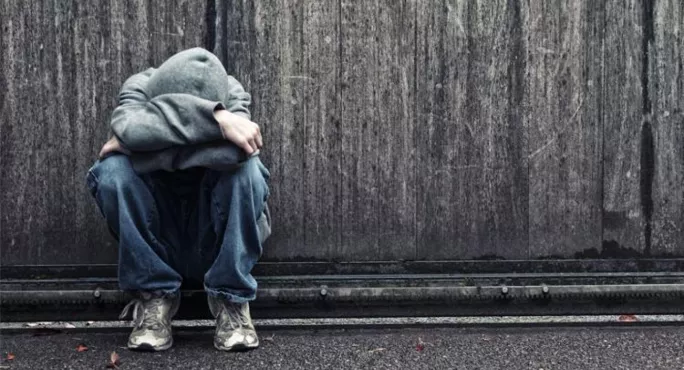- Home
- ‘Schools can kick the exclusions habit...’
‘Schools can kick the exclusions habit...’

Much like smoking, the practice of exclusions is a harmful habit that society could do without. Between 2015-16 and 2016-17, the number of permanent exclusions across all state-funded primary, secondary and special schools increased by around 15 per cent to 7,720, which averages out at around 40 permanent exclusions per day.
The rise in the number of school exclusions should be a key area of concern for us all. It could be partly blamed on children becoming disengaged from school as the curriculum narrows, with a growing focus on testing, especially among young children. Teachers have also warned about the impact of cuts on the number of teaching assistants, who often support disruptive pupils.
Put bluntly, children who are not learning misbehave, disrupt lessons, are internally excluded - sent to the “learning centre” or something similar - get bored, feel rejected, misbehave again and experience fixed-term exclusions. Parents and carers get frustrated with the system and the pupil returns to the classroom with the same problems before being permanently excluded.
While it is undoubtedly a vicious cycle that must be broken, it is also just the tip of the iceberg. There is a significant number of unofficial exclusions taking place as schools “game the system” through “off-rolling” or managed moves or by encouraging parents and carers to move their children into “part-time schooling” or home education. I have witnessed underachieving children being moved from school in Years 5, 6, 9 and 10 in a bid to protect examination results, league tables, admissions and, ultimately, funding.
It’s the most vulnerable and disadvantaged groups who are losing out. Excluded pupils are twice likely to be in care, three times more likely to be children in need, four times more likely to be growing up in poverty, and seven times more likely to have special educational needs and disabilities (SEND). Those pupils identified with SEND and living in care are 18 times more likely to be excluded.
The impact of school exclusions
Unsurprisingly, excluded pupils are likely to develop a range of disorders, including anxiety, depression and behavioural problems (Psychological Medicine, August 2017). After exclusion, there is a downward spiral of underachievement, with excluded pupils twice as likely to have no educational qualifications and only one in a hundred going on to attain five good GCSEs.
Post-school, exclusions leave a long-lasting and negative legacy: 80 per cent of young offenders were persistently absent from school and over two-thirds of the prison population were previously excluded for poor attendance and behaviour. This is estimated to cost the UK economy £2.9 billion.
So, why not find a solution?
Back in 2010, Barnardo’s provided both the quantifiable costs of exclusion to the public purse and to the individual. The government calculated that one place in a pupil-referral unit (PRU) cost £15,000 per year. The charity then investigated the costs and outcomes of running a service in the voluntary sector to reduce exclusions - the findings were stark.
Compared with the costs of exclusion, even the most intensive model of intervention saved money in the long term - as well as helping young people to resolve the issues that distract them from learning. Initiatives like a part-time vocational alternative to school, or a term-long inclusive learning programme followed by support to get back into school, were found to be highly cost-effective. The cost of supporting a young person to stay in school for a year averaged at £1,696 and recorded creditable success rates in restoring young people into education.
More recently, my own charity, Achievement for All, has worked to support excluded young people. Between 2016 and 2018, seven in 10 children and young people who had been the subject of a fixed-term exclusion had reduced their rate of exclusions by the end of one year on our programme.
At the heart of what works is putting the focus clearly on the child. We must encourage partnerships with schools, early years and post-16 settings, bringing together expert coaches, leaders, teachers, parents, carers, children, young people and other agencies to improve literacy, numeracy, attendance and behaviour for vulnerable and disadvantaged pupils. Teachers, parents and carers feel valued. Pupils feel that they belong, they can learn, they can achieve.
Yes, challenges remain, schools need extra support and investment to tackle these issues and parents and carers should no longer be left on the outskirts of their children’s education. However, there are solutions and with the will of policymakers and practitioners, we can eradicate exclusions from our school system and ensure those 40 children a day secure the right to achieve, contribute to society and lead fulfilling lives.
Professor Sonia Blandford is founder and CEO of charity Achievement for All. Exclusion, off-rolling and alternative provision issues will be explored further at the charity’s flagship Every Child Included in Education national Conference next week
Keep reading for just £1 per month
You've reached your limit of free articles this month. Subscribe for £1 per month for three months and get:
- Unlimited access to all Tes magazine content
- Exclusive subscriber-only stories
- Award-winning email newsletters


